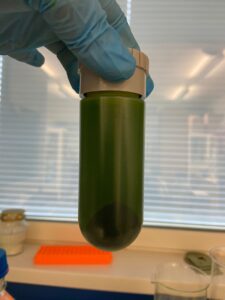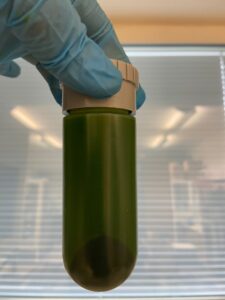Strain Selection in Algae: Cultivating the Future of Sustainable Resources
Introduction:
Algae, often regarded as the unsung heroes of the natural world, hold tremendous potential for addressing some of our most pressing global challenges, such as food security, renewable energy, and environmental sustainability. Strain selection in algae plays a pivotal role in harnessing their capabilities, as not all algae are created equal. In this article, we will delve into the significance of strain selection in algae and explore how it can lead us towards a more sustainable future.
The Algae Universe:
Algae encompass a diverse group of photosynthetic organisms that thrive in various aquatic environments, from freshwater ponds to oceans. While some may associate algae primarily with the greenish slime that accumulates on stagnant water, this is just the tip of the algae iceberg. Algae can be classified into various categories based on their characteristics, including color (green, brown, red), habitat (freshwater, marine), and morphology (unicellular, multicellular). This diversity is where the importance of strain selection comes into play.
Why Strain Selection Matters:
-
Productivity and Biomass Yield: Different algae strains exhibit varying growth rates and biomass yields. Selecting strains that grow quickly and produce high biomass is essential for applications like biofuels, bioplastics, and food production.
-
Nutritional Profile: Algae are rich in essential nutrients and bioactive compounds. Strain selection allows us to choose algae with the desired nutritional composition, which is crucial for applications in aquaculture and human nutrition.
-
Environmental Adaptability: Algae strains have unique environmental requirements. Strain selection helps match specific strains to suitable cultivation conditions, minimizing resource inputs and environmental impacts.
-
Biochemical Production: Algae can be engineered to produce valuable bioactive compounds, pharmaceuticals, and bioplastics. The choice of strain is pivotal in achieving high yields of these products.
Applications of Strain Selection in Algae:
-
Biofuel Production: Strain selection is critical for optimizing lipid and carbohydrate content in algae, as these compounds can be converted into biofuels like biodiesel and bioethanol.
-
Nutraceuticals and Pharmaceuticals: Algae strains rich in compounds like omega-3 fatty acids, antioxidants, and anti-inflammatory agents are chosen for the production of nutraceutical and pharmaceutical products.
-
Aquaculture: Algae serve as a primary food source for aquaculture species. Strain selection ensures that the algae used in aquaculture provide the necessary nutrients for fish and shellfish.
-
Bioremediation: Algae can remove pollutants from water and soil. Strain selection helps identify algae species that are efficient at absorbing specific contaminants.
-
Carbon Capture: Certain algae strains have the ability to sequester carbon dioxide from the atmosphere. Selecting these strains can contribute to carbon capture and combat climate change.
Challenges in Strain Selection:
While strain selection offers immense potential, it comes with its own set of challenges. Identifying and characterizing algae strains can be time-consuming and costly. Moreover, ensuring genetic stability and scalability of selected strains for commercial applications can be complex.
Conclusion:
Strain selection in algae represents a cornerstone in unlocking the vast potential of these remarkable organisms for sustainable solutions. Whether it’s biofuel production, nutritional supplements, or environmental remediation, the choice of the right algae strain can make all the difference. As research and technology continue to advance, we can expect more sophisticated methods of strain selection, leading us towards a greener and more sustainable future.



